Gone are the days when ID bracelets for women were solely associated with medical information; today, they marry functionality with fashion, allowing women to express their style while ensuring their safety.
Table of Contents
The article was last updated on 02/10/2024. The average reading time is 15 minutes.
| Here are our articles for all the different types of bracelets for women: |
| Chain Bracelets For Women |
| Cameo Bracelets For Women |
| Leather Bracelets For Women |
| Stretch bracelets for women |
| Tennis bracelets for women |
| Bungle Bracelets for Women |
| Cuff Bracelets for Women |
| Friendship Bracelets for Women |
| Anklet Bracelets for Women |
In today’s fast-paced world, where personal safety and medical awareness are paramount, ID bracelets for women have emerged as both a practical necessity and a fashionable accessory. These versatile pieces of jewelry serve multiple purposes, from providing crucial medical information in emergencies to adding a touch of personalized style to any outfit. In this comprehensive guide, we’ll explore everything you need to know about ID bracelets for women, from their various types and styles to their potential lifesaving benefits.
Introduction to ID Bracelets for Women
ID bracelets, or identification bracelets, are wearable accessories that display essential personal information about the wearer. They have become increasingly popular for women due to their dual functionality as both a safety measure and a fashion statement.
The concept of identification jewelry dates back to World War II when soldiers wore “dog tags” to identify themselves in case of injury or death. Over time, this practical idea evolved into civilian use, particularly for individuals with medical conditions. Today, ID bracelets for women come in various forms, from simple metal bands to elegant, jewel-encrusted designs that seamlessly blend with other accessories.
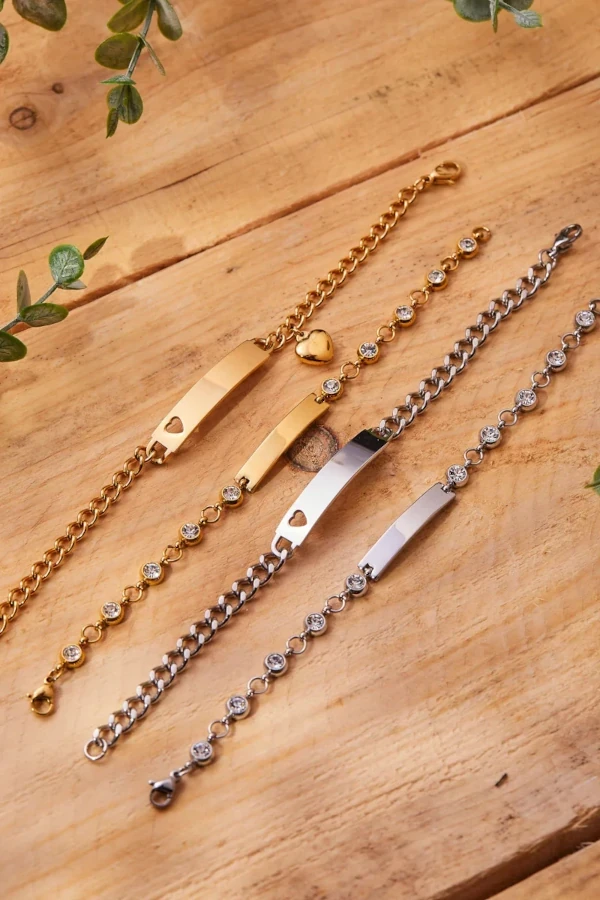
The evolution of ID bracelets reflects a growing awareness of personal safety and health management. Women, in particular, have embraced these accessories to take control of their well-being while expressing their style. Whether it’s a subtle medical alert bracelet or a bold fashion statement piece, ID bracelets have become a part of many women’s daily wear.
Types of ID Bracelets for Women
Regarding ID bracelets for women, there’s no one-size-fits-all solution. Different needs and preferences have led to the development of several types:
- Medical Alert Bracelets: These are crucial for women with chronic health conditions, allergies, or special medical needs. They quickly inform first responders about critical health information in emergencies.
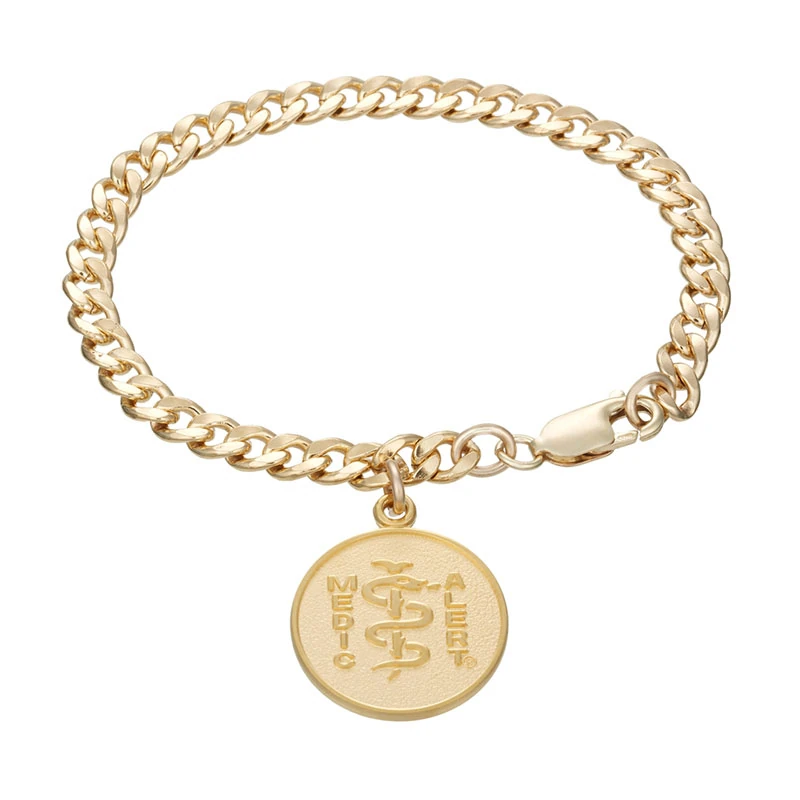
- Safety ID Bracelets: Designed for general safety, these bracelets typically include emergency contact information and can be especially useful for travelers or those engaging in outdoor activities.
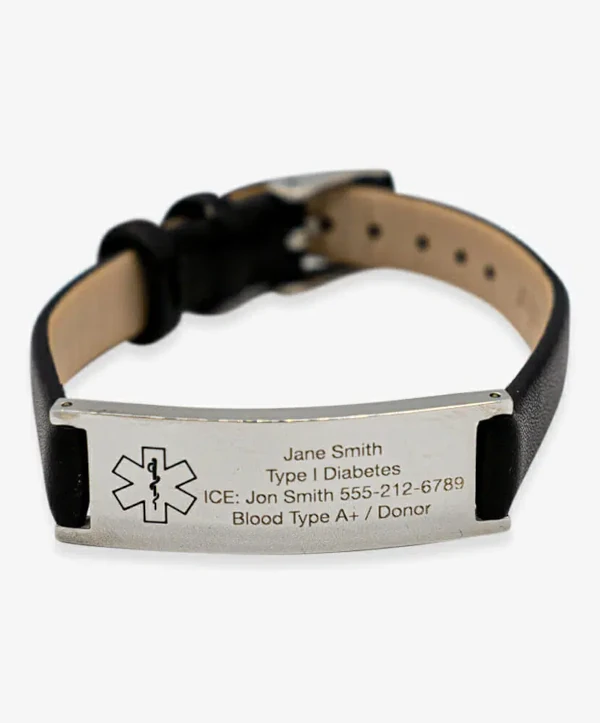
- Fashion ID Bracelets: These combine style with functionality, offering a wide range of designs that can complement any outfit while providing essential information.
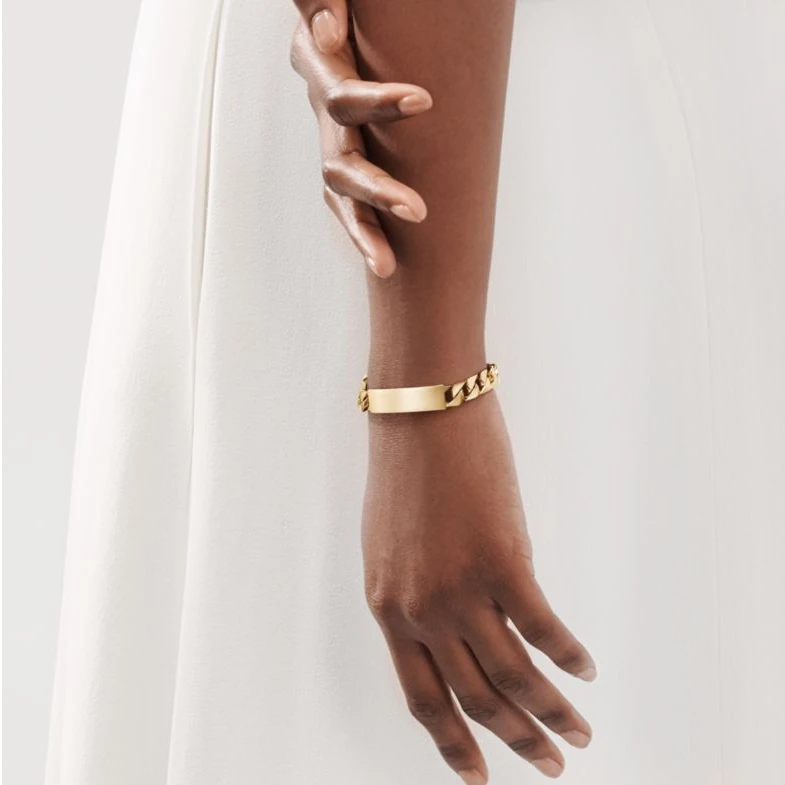
- Smart ID Bracelets: Incorporating modern technology, these bracelets can store extensive information and connect to smartphones or medical databases.
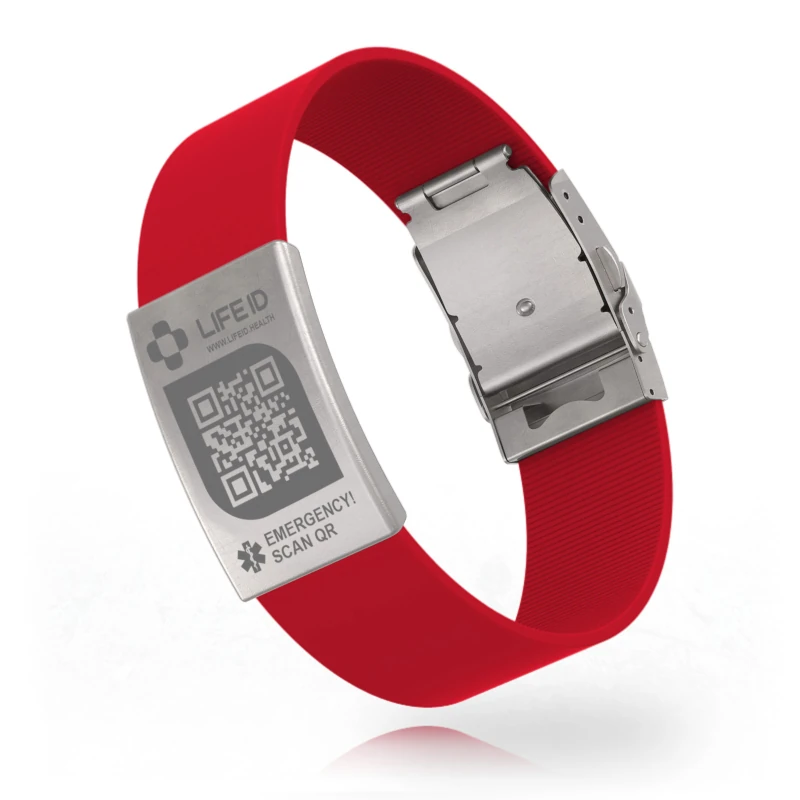
Each type of women’s ID bracelet serves a specific purpose, and many women choose to own multiple types to suit different occasions and needs.
Deep Dive: Medical Alert Bracelets
Medical alert bracelets are perhaps the most well-known type of ID bracelet. They’re essential for women with conditions such as:
- Diabetes
- Epilepsy
- Severe allergies
- Heart conditions
- Blood disorders
These bracelets typically feature the universal medical alert symbol, making them easily recognizable to medical professionals. The information engraved on these bracelets can be lifesaving when the wearer can’t communicate.
Safety ID Bracelets: A Traveler’s Best Friend
Safety ID bracelets offer peace of mind for women who love to explore. They often include:
- Name and emergency contact information
- Blood type
- Home country and language spoken
- Any crucial medical information
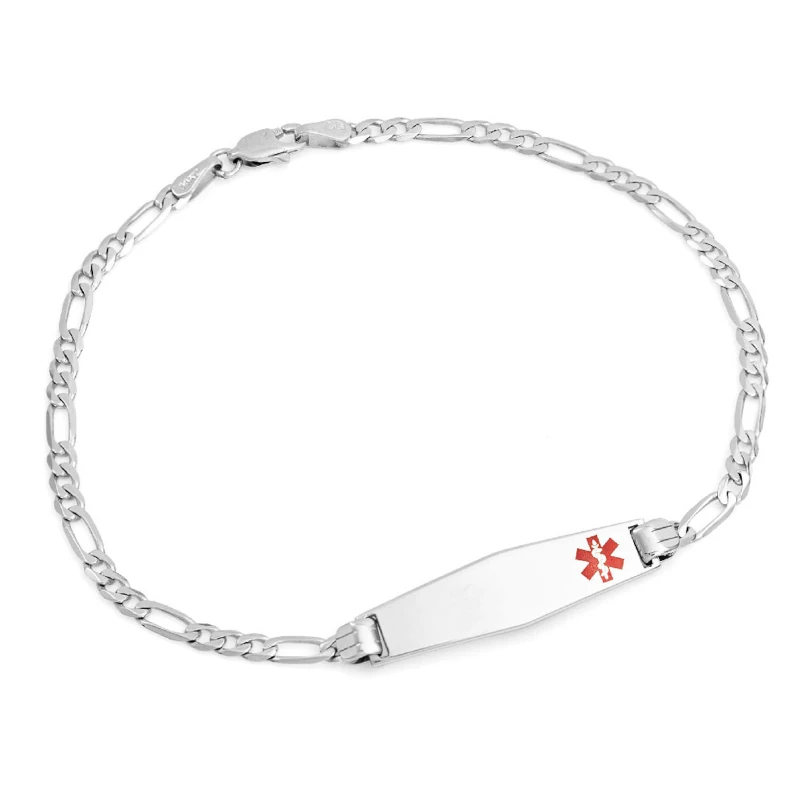
Some safety ID bracelets also come with GPS tracking capabilities, adding an extra layer of security for solo travelers or those venturing into remote areas.
Choosing the Right ID Bracelet
Selecting the perfect ID bracelet involves considering several factors:
- Material Considerations
- Metal: Metal is durable and classic, suitable for everyday wear. Options include stainless steel, sterling silver, and gold.
- Silicone: Comfortable and water-resistant, ideal for active lifestyles or sports enthusiasts.
- Leather: Offers a sophisticated look for more formal occasions, with the added benefit of being hypoallergenic for sensitive skin.
Style Options
- Classic: Simple, timeless designs that never go out of style, often featuring a plain band with engraved information.
- Modern: Sleek and minimalist options for contemporary women, sometimes incorporating unique shapes or materials.
- Minimalist: Subtle designs that blend seamlessly with other jewelry, perfect for those who prefer understated accessories.
- Ornate: Elaborately designed bracelets double as statement pieces, often featuring gemstones or intricate metalwork.
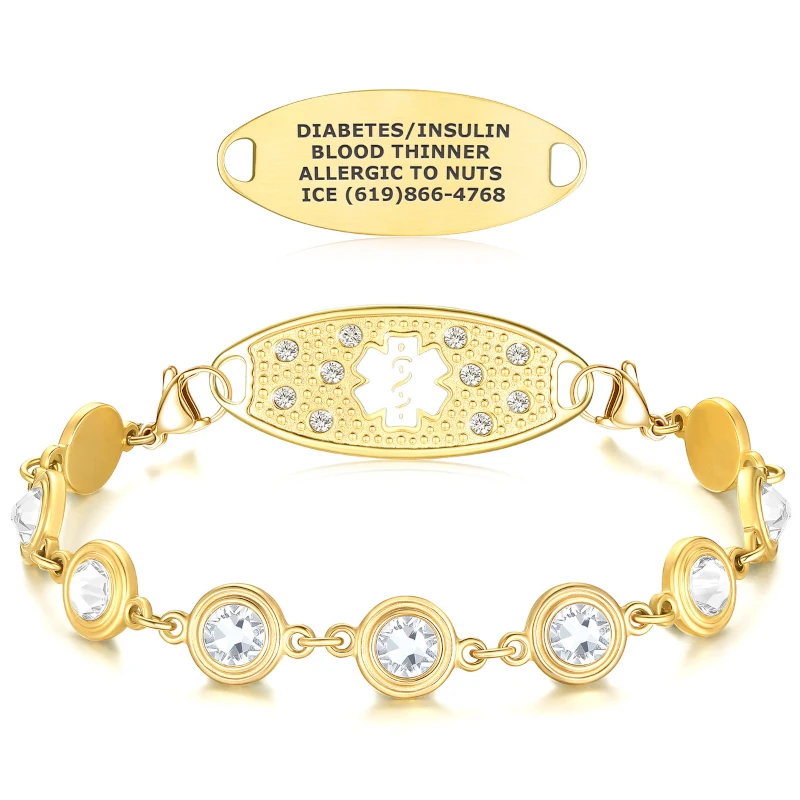
Customization Possibilities
Many manufacturers offer engraving services, allowing you to personalize your ID bracelet with specific information or decorative elements. Some options include:
- Laser engraving for precise, clear text
- Hand engraving for a more artisanal look
- Color-filled engraving for enhanced readability
- Symbol or icon engraving to represent specific conditions or allergies
- Sizing and Fit
Proper sizing is crucial for comfort and effectiveness. Here’s a general sizing guide:
Wrist Size (inches) Bracelet Size (inches)
5.0 – 5.5 6.0 – 6.5
5.5 – 6.0 6.5 – 7.0
6.0 – 6.5 7.0 – 7.5
6.5 – 7.0 7.5 – 8.0
Always measure your wrist and consult the brand’s sizing chart for the best fit. Remember that different styles may fit differently, so it’s worth trying on various options if possible.
Essential Information to Include on Your ID Bracelet
The information you choose to engrave on your ID bracelet can be lifesaving. Consider including:
- Medical conditions and allergies: Crucial for emergency responders. List the most severe or life-threatening conditions first.
- Emergency contact details: A reliable person to contact in case of emergencies. Include their name and phone number.
- Personal identification: Your name and other identifying information, such as date of birth.
- Blood type: Important for medical procedures, especially in emergencies requiring blood transfusions.
- Medications: List any crucial medications you’re taking, especially those that could interact dangerously with emergency treatments.
- DNR status: If applicable, indicate if you have a Do Not Resuscitate order.
Remember, space is often limited, so prioritize the most critical information. For more extensive details, consider an intelligent ID bracelet that can store additional data electronically.
Prioritizing Information: A Guide
- Name and critical medical condition(s)
- Severe allergies (especially to medications)
- Emergency contact number
- Blood type
- Crucial medications
- Any additional space can be used for less immediate but still important information.
Fashion Meets Function: Styling Your ID Bracelet
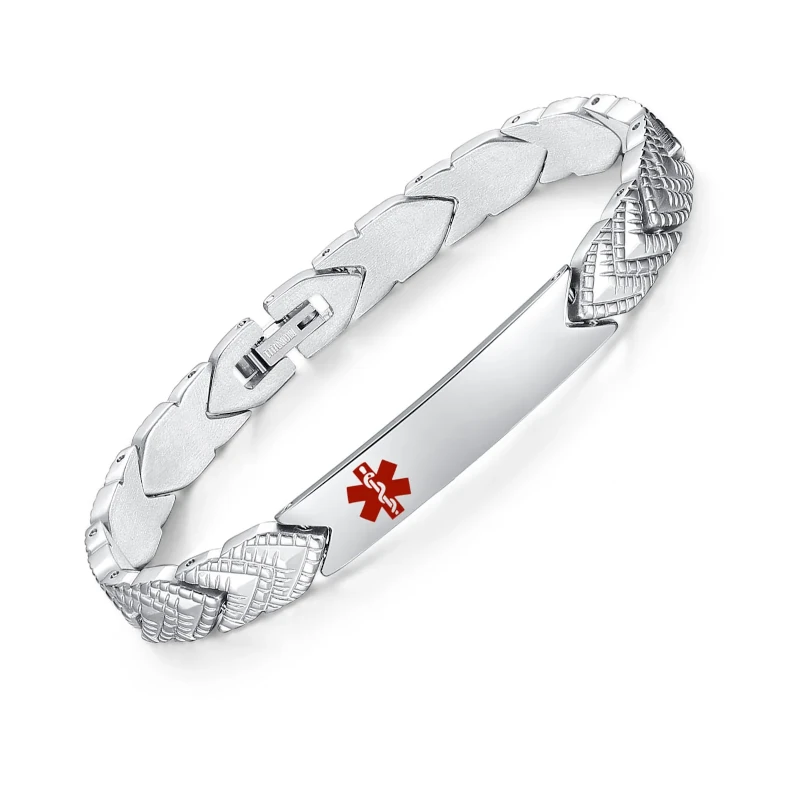
Gone are the days when ID bracelets for women were purely helpful. Today’s ID bracelets for women are designed to complement various styles and occasions. Here are some tips for incorporating your ID bracelet into your everyday look:
Matching with different outfits:
Choose a versatile design that works with both casual and formal wear.
Consider having multiple bracelets for different occasions (e.g., a sleek metal one for work and a colorful silicone one for the gym).
Stacking with other jewelry:
Combine your ID bracelet with other bracelets or a watch for a trendy, layered look.
Mix metals for an eclectic style, or stick to one metal tone for a cohesive appearance.
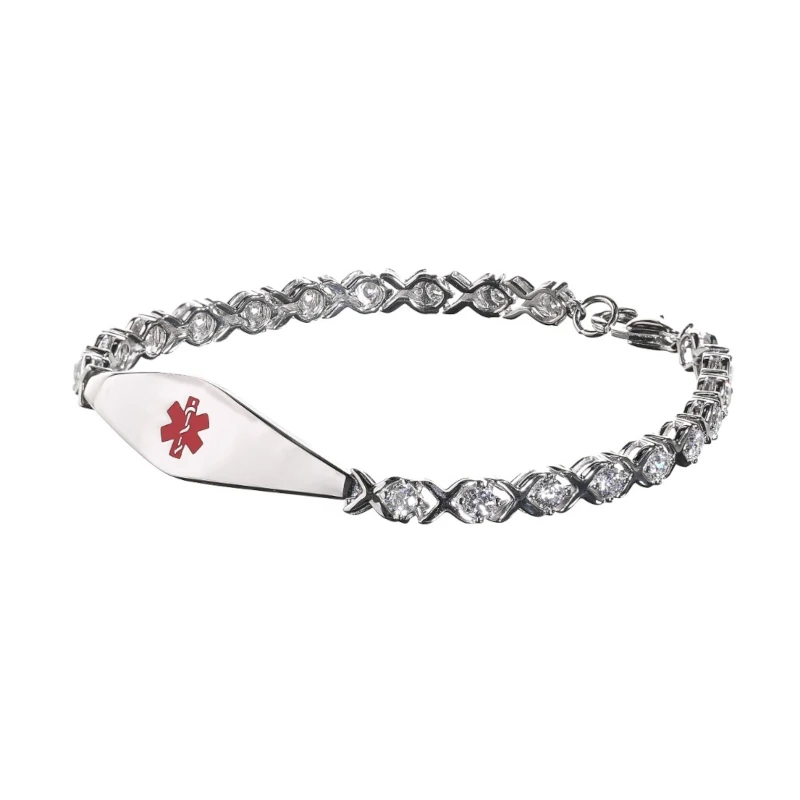
Seasonal trends:
Opt for interchangeable bands to switch up your style with the seasons.
Choose colors that complement your seasonal wardrobe.
“An ID bracelet doesn’t have to be just a medical necessity – it can be a statement piece that reflects your style while keeping you safe.” – Emma Johnson, Fashion Blogger
Style Ideas for Different Occasions
- Work: A slim, elegant metal bracelet that looks professional and discreet.
- Casual outings: A leather or beaded bracelet that blends with everyday accessories.
- Formal events: A delicate chain bracelet with a small, engraved plate.
- Sports and fitness: A durable silicone band in a fun, bright color.
The Technology Behind Smart ID Bracelets
As technology advances, so do the capabilities of ID bracelets. Smart ID bracelets for women offer enhanced functionality through:
- QR code integration: Allows quick access to more detailed information via a smartphone scan. Medical professionals can instantly access a comprehensive health profile.
- NFC technology: Enables contactless sharing of information with compatible devices. This can include detailed medical records, emergency protocols, and even advance directives.
- GPS tracking options: These bracelets provide location tracking for added safety, especially for elderly wearers or those with cognitive impairments. Some bracelets can alert caregivers if the wearer leaves a designated safe area.
- Biometric sensors: Advanced models can monitor vital signs like heart rate and blood pressure, providing real-time health data.
- Emergency alert systems: Some smart bracelets feature a button that, when pressed, can send an SOS signal with the wearer’s location to emergency services or designated contacts.
These technological advancements have revolutionized the ID bracelet’s function, offering more comprehensive protection and ease of use.
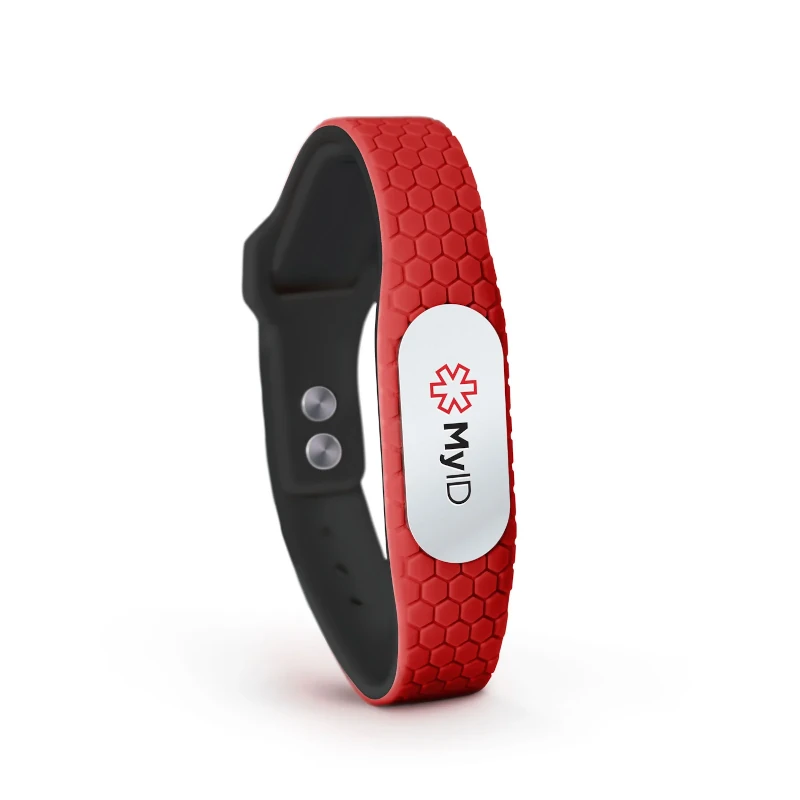
Case Study: The Impact of Smart ID Bracelets for Women
Sarah, a 35-year-old woman with a severe peanut allergy, wears an intelligent ID bracelet. During a business lunch, she accidentally consumed a dish containing peanuts. As she began experiencing anaphylaxis, a colleague scanned her bracelet’s QR code, which provided immediate access to her allergy information and emergency protocol. This quick access to crucial details allowed for swift and appropriate medical intervention, potentially saving her life.
Maintaining Your ID Bracelet
To ensure your ID bracelet remains effective and looks its best, proper maintenance is critical:
Cleaning and Care Tips
For metal bracelets:
- Use a soft cloth and mild soap solution.
- For tarnished silver bracelets, use a specialized silver cleaner.
- Avoid exposure to harsh chemicals or extreme temperatures.
For silicone bracelets:
- Wash with warm water and gentle soap.
- It can be disinfected with rubbing alcohol for thorough cleaning.
For leather bracelets:
- Wipe with a damp cloth and condition periodically.
- Avoid getting wet; if it does get wet, let it air dry naturally.
When to Replace Your ID Bracelet
- If the engraving becomes illegible
- If the bracelet shows signs of wear, that could lead to breakage
- If your medical information or emergency contacts change
- Every 3-5 years for regularly worn bracelets
Updating Information
Please review the information on your ID bracelet regularly to ensure it remains current and relevant. Remember to check your bracelet’s information annually or after significant health changes.
ID Bracelets for Special Needs
ID bracelets can be particularly beneficial for women with special needs or those caring for individuals with specific conditions:
Alzheimer’s and dementia patients:
- It helps ensure a safe return if the wearer becomes disoriented.
- It can include caregiver contact information and any crucial medical details.
Children with autism:
- Provides critical information if the child wanders or has difficulty communicating.
- It can include sensory sensitivities or behavioral triggers to help others understand and assist the child.
Individuals with chronic illnesses:
- Alerts medical professionals to specific health conditions that may require special treatment.
- Can list current medications or treatment protocols.
Epilepsy patients:
- Informs others about the condition in case of a seizure.
- It can include instructions for seizure first aid.
Individuals with rare diseases:
- Provides crucial information about uncommon conditions that emergency responders might not be familiar with.
- It can include links to more detailed medical information.
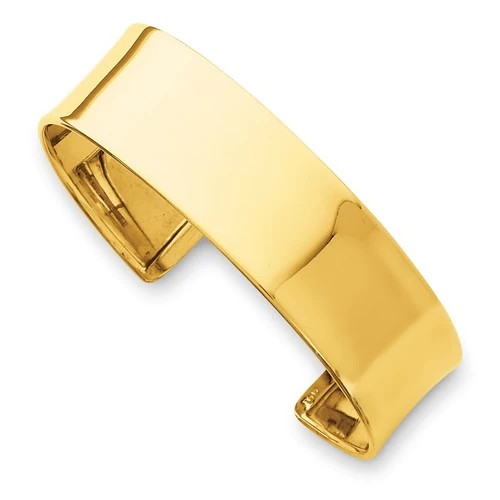
Case Study: Sarah’s Story
Sarah, a 45-year-old woman with severe allergies, credits her ID bracelet with saving her life during a sudden anaphylactic reaction at a restaurant. The staff quickly identified her condition from her bracelet and administered her EpiPen before paramedics arrived. This quick action prevented the situation from becoming critical.
Where to Buy ID Bracelets for Women
Finding the perfect ID bracelet has never been easier, with options available from various sources:
Online retailers:
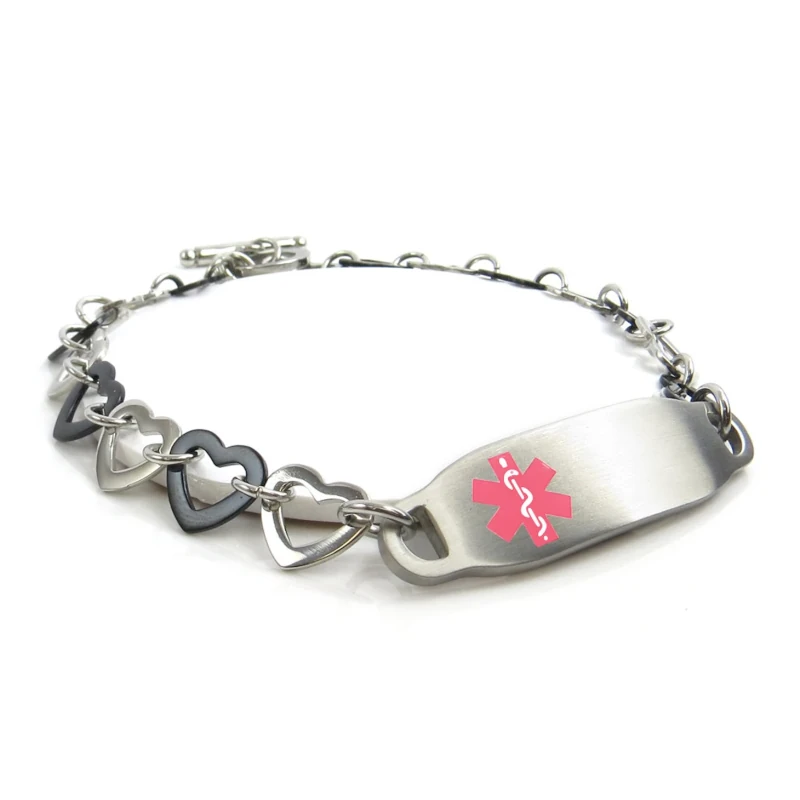
Offer a wide selection and often provide customization options.
Examples include Amazon, Etsy, and specialized medical ID jewelry websites.
Pros: Vast selection, often cheaper, easy comparison shopping.
Cons: You can’t try them on before purchasing.
Jewelry stores:
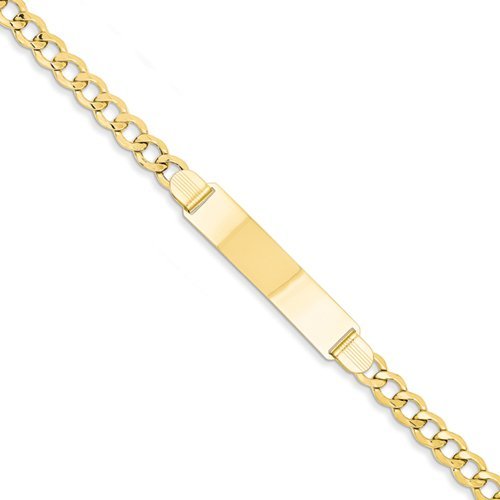
Allow you to see and try on bracelets in person.
Often offer high-quality, stylish options.
Pros: Personal service; I can see the quality firsthand.
Cons: They can be more expensive, with limited selection compared to online options.
Medical supply shops:
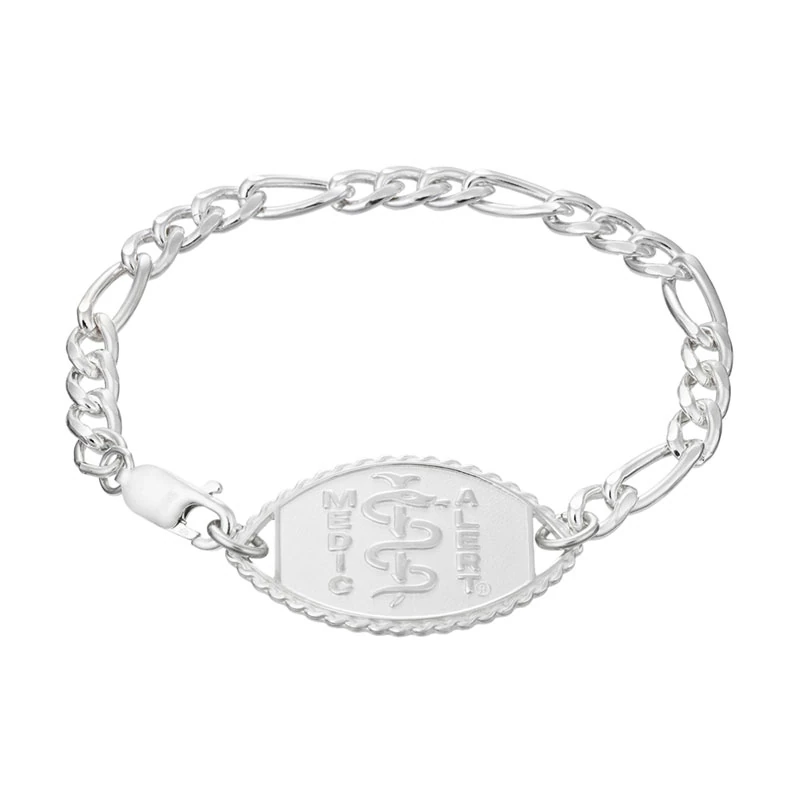
Specialize in medical alert bracelets with a focus on functionality.
Staff are often knowledgeable about specific medical needs.
Pros: Expertise in medical requirements and durable options.
Cons: It may have fewer stylish options.
Custom design options:
This is for those seeking a unique piece that perfectly balances style and safety.
Can work with a jeweler to create a one-of-a-kind bracelet.
Pros: Complete customization, perfect for specific needs or styles.
Cons: Often more expensive, can take longer to produce.
When choosing where to purchase your ID bracelet, consider customization options, material quality, and customer reviews. The return policy is also worth considering, especially when buying online.
The Future of ID Bracelets for Women
As we look ahead, the future of ID bracelets for women appears bright and innovative:
Emerging technologies:
Integration with smartwatches and fitness trackers for comprehensive health monitoring.
Potential for micro-chip implants that could store medical information (though this raises ethical considerations).
Integration with health monitoring devices:
Real-time health data tracking and emergency alert systems.
Potential for bracelets that can detect changes in vital signs and alert wearers or medical professionals.
Predictions for style and functionality:
Even more seamless blending of fashion and function, with bracelets that adapt to the wearer’s needs and style preferences.
Possibility of color-changing materials that could indicate medical status.
Enhanced data security:
As bracelets store more sensitive information, improved encryption and privacy measures will be crucial.
Artificial Intelligence integration:
AI could help interpret health data from intelligent bracelets and provide personalized health insights or alerts.
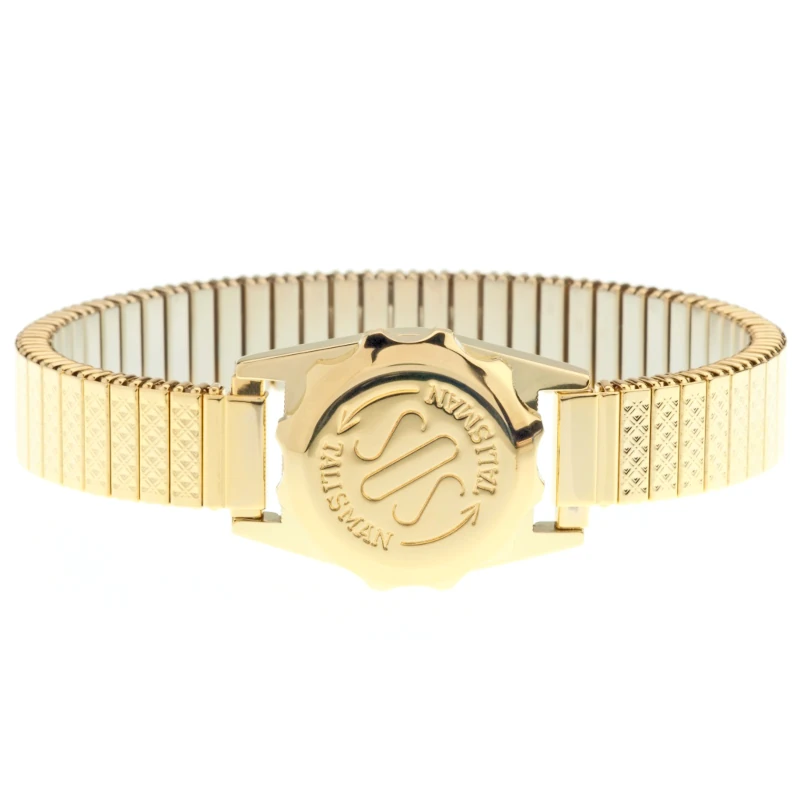
The evolution of ID bracelets continues to prioritize safety and style, ensuring that women can feel protected without compromising personal expression. As technology advances, we can expect ID bracelets to become even more integral to personal health management and emergency response systems.
FAQ: Most Asked Questions About ID Bracelets for Women
Are ID bracelets for women waterproof?
Many are water-resistant, but it depends on the material. Silicone and certain metals are generally safe for water exposure, while leather should be kept dry. Always check the manufacturer’s specifications.
Can I wear my ID bracelet through airport security?
Most women’s ID bracelets are delicate to wear through security, but it’s best to inform TSA agents if your bracelet contains any electronic components. Metal bracelets may set off detectors, so be prepared to remove them if necessary.
How much information can I fit on an ID bracelet?
This varies by bracelet size and style. Traditional bracelets may fit 3-5 lines of text, while smart bracelets can store more information electronically. Prioritize the most critical information for engraving.
Are ID bracelets for women only, or are they for medical conditions?
No. ID bracelets for women can be used for various purposes, including general safety, travel, and even as fashion accessories with personal information. They’re versatile tools for anyone to carry important information with them.
How often should I update the information on my ID bracelet?
Review your bracelet information annually or whenever there’s a significant change in your health status or emergency contacts. For electronic bracelets, update information as soon as any changes occur.
Can I design my ID bracelet?
Yes. Many companies offer customization options, from choosing the material and style to designing the engraving layout. Some jewelers even offer fully custom-designed pieces.
Are there ID bracelets for children?
Absolutely. Many child-friendly designs are available, including adjustable options with the child. These are especially popular for children with medical conditions or special needs.
How durable are ID bracelets for women?
Durability varies by material and quality. High-quality metal and silicone bracelets can last for years with proper care, while leather may show wear more quickly. Check for sturdy clasps and high-quality engraving.
Share this article
Our Latest Articles
Laoutaris Recommends
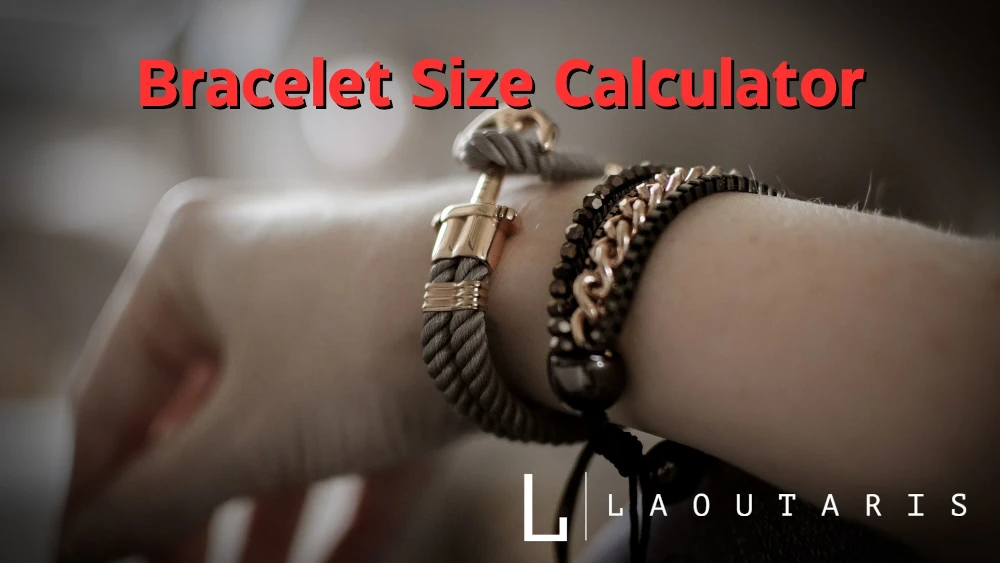

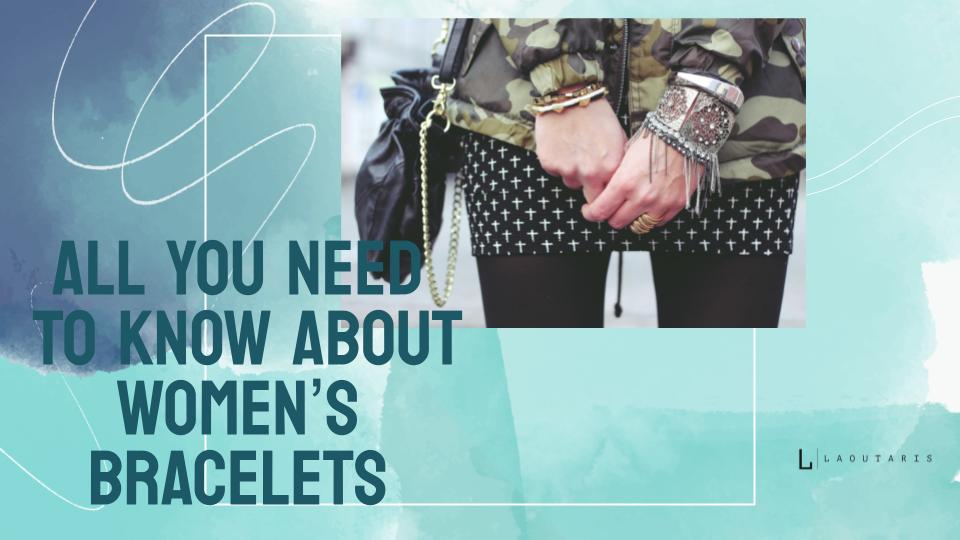

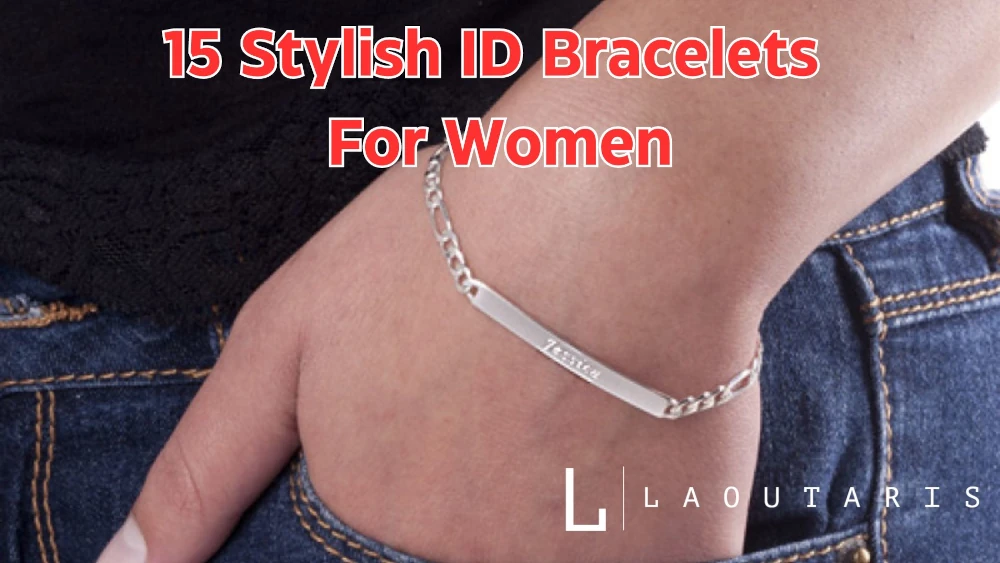
I loved as much as youll receive carried out right here The sketch is attractive your authored material stylish nonetheless you command get bought an nervousness over that you wish be delivering the following unwell unquestionably come more formerly again as exactly the same nearly a lot often inside case you shield this hike
I just could not leave your web site before suggesting that I really enjoyed the standard information a person supply to your visitors Is gonna be again steadily in order to check up on new posts